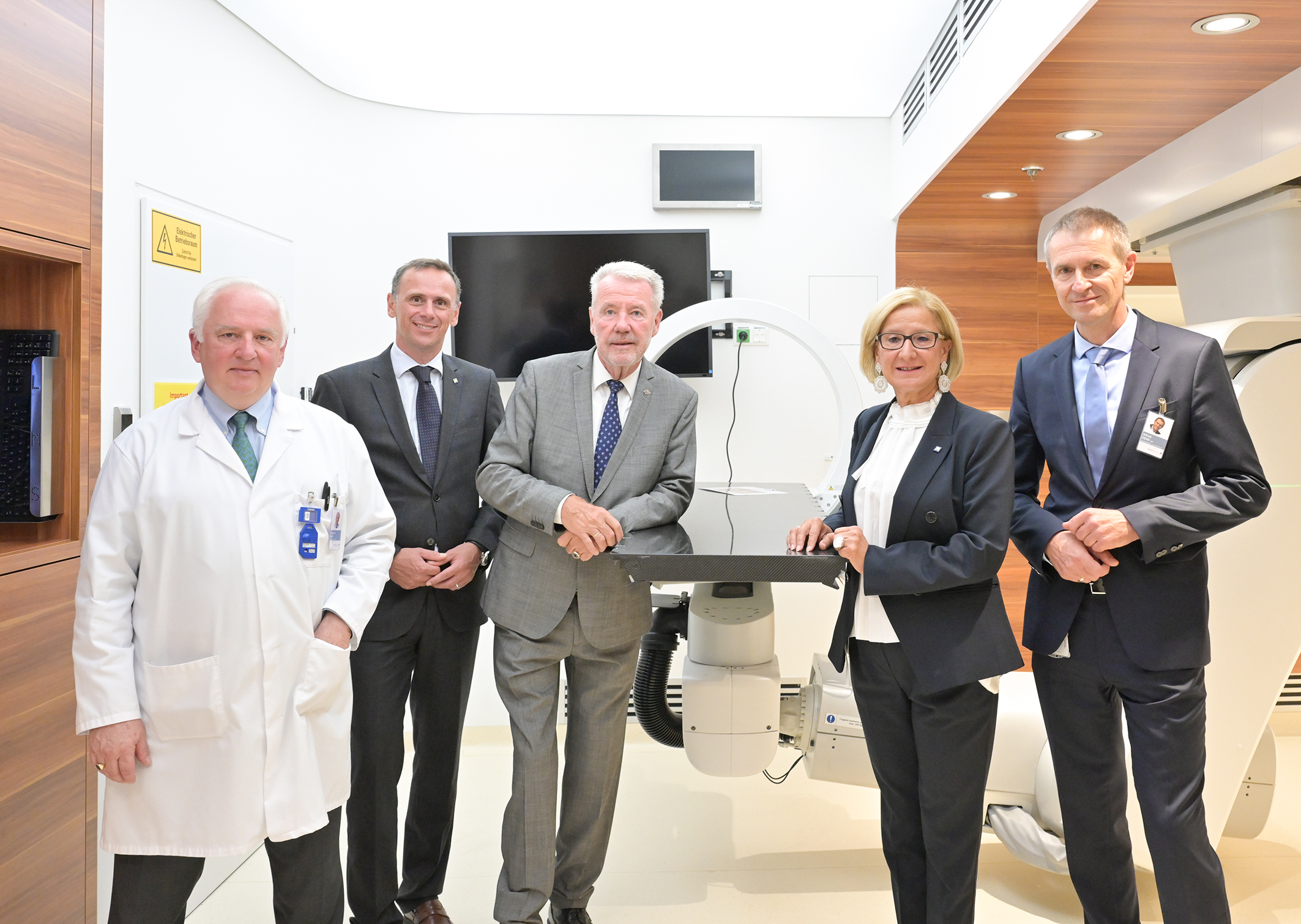1,000 cancer patients treated: promising results of particle therapy
Just over 1,000 cancer patients, including many children and adolescents, have completed particle therapy at MedAustron since the start of operations at the end of 2016. A lower risk of side and long-term effects, better tumor control in complex indications, and improved quality of life are the promises of this form of therapy. A first review is optimistic about all these factors.

The goal of ion therapy is not only to successfully treat the tumor, but also to limit side effects and restore or maintain quality of life. This form of radiation therapy uses charged particles to deliver radiation, exposing healthy tissue to less radiation dose and thus minimizing the risk of acute side effects and long-term effects. The MedAustron Ion Therapy and Research Center is one of only six centers worldwide that uses this form of cancer treatment with two types of charged particles – namely protons and carbon ions. An initial review in what is now the fifth year of operation shows that the goals of the therapy have been achieved for the majority of patients.
This can be verified above all within the framework of a prospective registry study in which almost all patients are participating and whose data are currently being analyzed for publication in scientific journals. The analyses already show that patients with head tumors, for example, retain their neurocognitive performance and resilience after completing their therapy. This includes visual-motor coordination, verbal short-term memory, and word fluency. Tumor control in very complex cases is also promising. In that group of patients whose brain tumors recurred after previous other irradiations and who were irradiated with protons at MedAustron, late effects occurred in less than 10% of those affected. Tumor control, i.e. the absence of new tumor growth, was 87% after two years (example meningiomas).
About 17% of the patients treated at MedAustron are children and adolescents between one and 18 years of age. They benefit particularly from particle therapy: their growing tissue reacts especially sensitively to radiation, and the risk of long term effects in adulthood is high. Therefore, the lower the radiation exposure, the better the chances of normal tissue development and thus preservation of quality of life for many years to come. The treatment of pediatric indications with protons is now very well established, and particle therapy is often routinely used as the preferred form of radiation.
Eugen B. Hug is a pioneer in the treatment of children with protons. As MedAustron’s Medical Director, he comments on the results of the first 1,000 treatments:
“I am very pleased with the promising results we have achieved with the first thousand patients, because they show us that the promises we made at the start of operations were not mere empty words. We can effectively combat many difficult-to-treat cancers while preserving the quality of life of those treated in the longer term. The longer we are in operation and the more data we collect, the stronger we can back this up and generate evidence for the benefits of particle therapy.”
Governor Johanna Mikl-Leitner added: “More than 1,000 successfully treated cancer patients, both children and adults, speak for the success story of MedAustron. With the innovative treatment methods, patients regain more quality of life, but above all hope in the fight against cancer.”
Chairman of the MedAustron Supervisory Board Klaus Schneeberger emphasizes: “MedAustron has truly gone from a bold vision to a successful project. What is unique about it is that both main focuses – treatment and research – are given equal priority. We have already achieved a lot, but we also have a lot ahead of us: already now, but especially with the full completion of the center we will achieve in 2022, MedAustron will be an important partner in the research and healthcare hotspot Wiener Neustadt.”
Currently, the most frequently treated conditions differ depending on the type of particle applied. Protons are most frequently used to treat head and neck tumors, pediatric tumors and tumors of the central nervous system. Carbon ions, which are used primarily for tumors that do not respond or respond insufficiently to other types of radiation, are currently used primarily for re-irradiation, sarcomas and also for head and neck tumors. The overall spectrum of indications also includes, to a lesser extent, tumors at the skull base, in the gastrointestinal area, and urogenital and gynecological tumors. Thanks to the development of innovative new treatment concepts and new clinical studies, the range of cancers that can be treated at MedAustron will continuously expand in the coming years.
